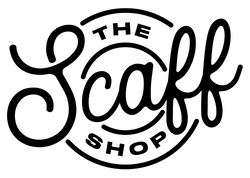Why do we talk about moisture content?
To most people ordering timber products such as shelves for their home, moisture content is not something that is commonly thought about. We're all used to ordering a piece of wooden furniture from our local Scandinavian furniture store, and putting it up with no concern given to water content at all. We usually don't need to - these shelves are not made from solid wood, but usually some sort of chipboard or laminate, which is cheap, stable, but not very original.
Our items are of course all solid wood, which is beautiful and unique, but as with all solid timbers it's structure will change somewhat as it takes on and loses water, which will be happening all the time. Timber, like many natural materials, is hygroscopic, meaning it will absorb or shed moisture to balance with the environment it is in. So if the timber is placed in a drier environment it will shed moisture until balance is achieved, and likewise will take on water when in a more humid environment.
Why does this matter?
In many ways, the moisture content of timber within a certain range doesn't matter at all - it won't rot unless particularly moist and only when very dry does it risk becoming brittle. The wood won't even feel or look any different even at the extremes of possible moisture content. The main issue however is that changes in moisture cause the timber itself to increase or decrease in size. Not only this, but different parts of the timber will take on moisture (and therefore size) at different rates.
In an individual piece of timber this can cause the shape to change significantly. It can twist, cup, bow or crook, which can spoil the appearance and even cause the timber to be no longer functional, if for example it is a shelf which is no longer flat. In items where timber is jointed (such as tables, doors etc), the movement can be strong enough to pull the joins apart, or to split the wood itself if the join is too strong to break. In the worst cases, furniture can be ruined by this process.
So why use solid timber at all?
If you're here visiting The Scaff Shop, you're probably not asking this question. You've already realised that solid wood has so many benefits when compared to manufactured timber products, particularly in the qualities that we look for with furniture. Probably most importantly, it looks real (because it is!), so has a visible grain, knots, and all the other characteristics that make every piece unique and original (even more so if reclaimed!). It's why we're all here, because we love how good solid wood looks.
In addition to this, it's sustainable and renewable - it can be replanted, has none of the chemicals or glues that manufactured timbers have, and actually locks away carbon for it's entire lifetime. We just have to make sure we manage moisture!
How much moisture do scaffold boards have?
To be honest, they vary massively. If new, then they may still be holding a fairly high level of moisture, unless they have been kiln dried (more on this later), which is not a necessity for a scaffold board. Even if they're old and therefore well seasoned, the life of a scaffold board means it is often left out in the rain and unfortunately not always stored away between uses in a sheltered environment, which means they can end up quite wet.
Here at The Scaff Shop we cover all our boards to protect them from rain, and we are careful to always dry out the wetter ones as much as possible before we would even consider it being suitable for sale. We know that wet boards are not good for our customers, so it's important to us to take the time to air dry them here first.
When we sell you a board or an item made from one, it has always been carefully selected by our experienced team of makers. If it is too wet, it goes back on the rack to dry further. In this way we can supply good quality boards which have been air dried to a moisture content suitable for the many used that our customers have for them.
What about if I need boards with an even lower moisture content, so that I can make furniture?
We know that many of our customers are making all sorts of wonderful pieces of furniture, and will therefore be joining boards. As mentioned above, joining boards which are not suitably dry can be particularly problematic. This is why furniture makers will often look for timber dried to a level of below 10%, which is particularly low (although is not necessary for many of the non-furniture products that we make such as shelves).
For those of you looking for this low level of moisture, our kiln dried New Scaffold Boards or Pallet Wood are what we would recommend (be sure to choose the kiln dried options in each instance if you follow these links). With our kiln dried options our timber is dried to a approx 8-12% moisture content, and is therefore much more suitable for furniture.
We're also aiming to make kiln dried Reclaimed Boards an option in the future, so please watch this space or pop us a message if this is something you're interested in.

